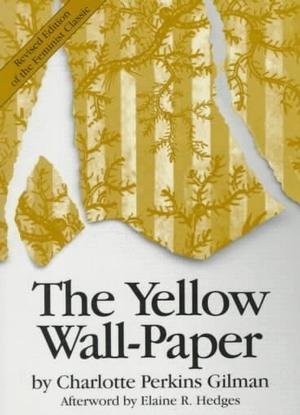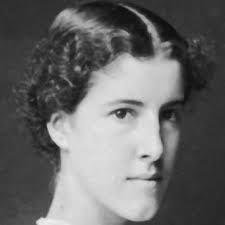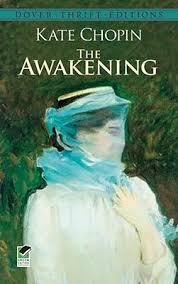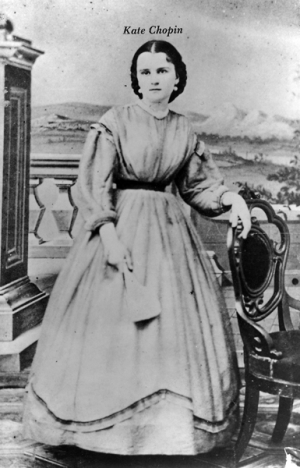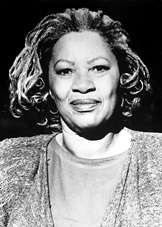
Looking for some great beach reads by women? Revisit these classics: Charlotte Perkins Gilman's The Yellow Wallpaper (1892); Kate Chopin's The Awakening (1899); and Toni Morrison's The Bluest Eye (1970). All three books challenge contemporary thought for the time periods in which they were written -- Gilman challenging the medical establishment's diagnosis of hysteria in women; Chopin challenging the turn-of-the-century notion that adultery as subject matter was off-limits for women authors; and Morrison examining another layer of racism in America. Crucial as markers on a historical timeline of women's contribution to the literary canon, these three books are also riveting reading, aside from their historical significance, or what they assert about men, women, marriage, sex, gender and race.
The Yellow Wallpaper, a short story, is based on Gilman's own experience with Dr. Weir Mitchell's famous Rest Cure. In the late 19th/ early 20th century, women were diagnosed with "hysteria" at epidemic proportions. The so-called hysteria was really just the expression of dissatisfaction and discontent. Women were still legally the property of their fathers or husbands, had no autonomy and few options aside from motherhood. As their collective boredom and frustration heightened, it was met with the sweeping diagnosis of "a nervous disorder" or "hysteria." Instead of ferreting out the source of malaise and depression, their male counterparts saw them as temporarily mad, and those who were financially able, sent their disenchanted wives for the Rest Cure. Mitchell's popular treatment incarcerated women in hospitals for weeks at a time, infantilizing them, forcing "rest" by restraining them to beds, restricting reading, writing, or any intellectual stimulation. They used bedpans and were fed mashed up foods fit for infants. It's no wonder that when they were sent home to resume domestic life, a large number of them appeared to be "cured." They were probably just relieved to be upright, ambulatory, freed finally from the barbaric "treatment." The prescription they were sent home with was to avoid all work other than domestic, particularly discouraging any creative pursuits, "...to never touch pen, brush or pencil again." Gilman says she followed the advice for three months and nearly went mad. Then she wrote The Yellow Wallpaper as an indictment of Dr. Mitchell and as a warning to her peers to stay away from his so-called "cure."
In the story, a woman undergoing the Rest Cure becomes obsessed with the pattern on the wallpaper in the room where she's held captive. Restricted from all reading, this woman, hungry for intellectual stimulation, eventually invents in the wallpaper, a text, an unfolding story -- another woman seemingly trapped behind the pattern, desperately trying to get out. The sexism this story brings to light was ground-breaking in 1892. I highly recommend not only reading The Yellow Wallpaper, but some of the scholarship on it, as it took its place in women's literature and feminist theory.
The Awakening, while also required for any Women's Lit class, is a book you can read for sheer pleasure. I honestly don't know when I've been more transported by a novel. It's a delicious love story, and it's more than that. You will not want it to end. The book is set alternately in New Orleans and Grand Isle, Louisiana. Chopin's descriptions of both places are as beautifully nuanced as are her insights into Edna Pontellier, the protagonist, who upon a summer vacationing in Grand Isle, begins to yearn for a different life -- a life that at the time, was only available to men.
Her yearning is most evident on the night she learns to swim.
"A certain ungovernable dread hung about her when in the water... But that night she was like a little tottering, stumbling, clutching child, who of a sudden realizes its powers and walks for the first time alone, boldly and with overconfidence. She could have shouted for joy... as with a sweeping stroke or two she lifted her body to the surface of the water. She wanted to swim far out, where no woman had swum before."
From that point on, there is no stopping Edna as she seeks out what she needs -- autonomy, solitude, creative space, and men who are not her husband.
"The Awakening, in its frank, unapologetic treatment of the subject of adultery, was so far ahead of its time that it aroused, on its publication in 1899, a storm of controversy violent enough to end its author's young career" (Elaine Showalter). One reviewer commented that the book could've been brilliant, had it had been written by a man; by a woman, it was disgraceful. Chopin, aghast at the reaction to her novel, published an apology, a fact that saddens me. Chopin never knew her shunned book became a cherished classic, possibly one of the most taught books in women's literature curricula.
Read it and let it take you to turn-of-the-century Grand Isle and New Orleans, and deep into Edna's intellect and longing.
Everyone's heard of Toni Morrison. She won the Pulitzer Prize in 1988, the Nobel Prize in Literature in 1993, and the National Book Foundation Medal for Distinguished Contribution to American Letters in 1996. She's been a professor at Yale, Rutgers, SUNY Albany, and Princeton.
Everyone hasn't heard of The Bluest Eye, her first novel, about a black girl, Pecola Breedlove, who becomes obsessed by a desire for blue eyes, a desire to be other than who she is. Morrison utilizes Pecola's fixation to examine racial self-loathing, or racism perpetuated from within the race. Morrison's use of excerpts from the Dick, Jane & Sally readers of the 50s and 60s illustrates skillfully the white dominant culture that fosters Pecola's longing, and the self-loathing that leads to her demise.
"Quiet as it's kept, there were no marigolds in the fall of 1941. We thought, at the time, that it was because Pecola was having her father's baby that the marigolds did not grow. But so deeply concerned were we with the health and safe delivery of Pecola's baby we could think of nothing but our own magic: if we planted the seeds, and said the right words over them, they would blossom and everything would be all right."
"It was a long time before my sister and I admitted to ourselves that no green was going to spring from our seeds. For years I thought my sister was right: it was my fault. I had planted them too far down in the earth. It never occurred to either of us that the earth itself might have been unyielding. We had dropped our seeds in our own little plot of black dirt just as Pecola's father had dropped his seeds in his own plot of black dirt. Our innocence and faith were no more productive than his lust or despair. What is clear now is that of all of that hope, fear, lust, love, and grief, nothing remains but Pecola and the unyielding earth. Cholly Breedlove is dead; our innocence too. The seeds shriveled and died; her baby too."
Like Gilman's story and Chopin's book, Morrison's novel wasn't recognized as the classic it has become until years later. About this Morrison says, "The initial publication of The Bluest Eye was like Pecola's life: dismissed, trivialized, misread."
Highly recommend all three books. They're good enough to be read again and again.

